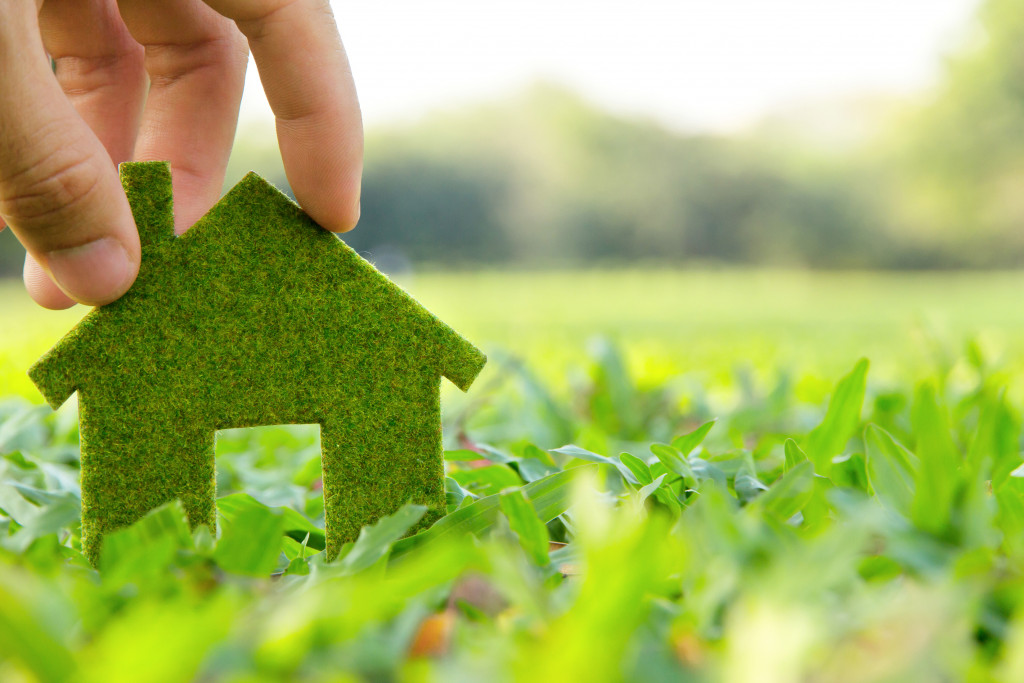- Choose sustainable, recycled, or upcycled materials to form the foundation of your design.
- Maximize natural light by using mirrors strategically, opting for light and reflective colors, and installing translucent window treatments.
- Indoor plants can purify the air, enhance aesthetic appeal, and create a connection with nature.
- Prioritize energy-efficient appliances to reduce energy consumption and lower carbon footprint.
- Design landscapes using professional model scenery and static grass experts to require minimal water and upkeep.
As more individuals become conscious of the environment and the impact of their decisions, the desire to embrace eco-friendly designs within homes has grown significantly. Not only does this approach prioritize sustainability, but it also crafts spaces that are harmonious, rejuvenating, and in sync with nature. If you want to make your home a haven for eco-friendly design, here are five transformative tips to help you navigate this journey.
1. Choose Sustainable Materials
Materials make the foundation of your home.
When considering eco-friendly designs, the materials you select play a crucial role. Opt for sustainable, recycled, or upcycled materials for your furnishings and decor. For instance, bamboo is an excellent flooring choice, given its rapid growth rate and durability.
Similarly, when it comes to furniture, reclaimed wood items provide a rustic charm and ensure no new trees are cut down for your decor needs. Incorporating these materials gives your home an earthy aesthetic and significantly reduces environmental harm.
2. Maximize Natural Light

Harnessing the sun’s energy is a game-changer.
Windows, skylights, and open spaces can flood your home with natural sunlight, reducing the need for artificial lighting during the day. Not only does this reduce energy consumption, but natural light has been proven to improve mood and productivity.
Here are some tips to maximize natural light:
Use Mirrors Strategically
Mirrors can significantly amplify the impact of natural light within your home. By placing mirrors on walls opposite to windows or other natural light sources, you can reflect and diffuse sunlight across the room, making the space brighter. Plus, mirrors can create an illusion of a larger space, adding to the aesthetic appeal of your home.
Opt for Light and Reflective Colors
The colors you choose for your interiors can affect how much natural light is absorbed or reflected. Dark colors tend to absorb light, making a room seem darker. On the other hand, lighter hues reflect light, amplifying its impact. Therefore, painting your walls, ceilings, and floors in light colors can significantly brighten up your space and maximize natural light.
Install Translucent Window Treatments
While window treatments are necessary for privacy and controlling the amount of light entering a room, choosing options that don’t entirely block natural light is crucial. Translucent treatments like sheer curtains, blinds, or shades can serve this purpose effectively. They provide privacy and light control while allowing enough light to brighten your room.
Incorporate Glass Doors and Partitions
Using glass doors and partitions can allow light to flow freely through your home, illuminating multiple spaces simultaneously. Particularly in small apartments or homes with a compact layout, glass doors or partitions can be a game-changer, enhancing the penetration of natural light across different rooms and making the entire space feel more open and airy.
3. Incorporate Indoor Plants
Greenery is the essence of an eco-friendly home.
Plants enhance the aesthetic appeal of your spaces and purify the air, absorbing toxins and releasing oxygen. Consider allocating specific areas in your design for indoor plants. The options are endless, whether it’s a vertical garden in your living room, herb pots in the kitchen, or even a mini indoor greenhouse.
By integrating plants into your design, you’re not just adding a splash of color but fostering a healthier and more vibrant living environment. Tending to plants can be incredibly therapeutic, creating a deeper connection between you and your eco-friendly abode.
4. Prioritize Energy-Efficient Appliances

Every device in your home can make a difference.
It’s essential to be conscious of the appliances you bring into your eco-friendly home. Look for Energy Star labels or other certifications that indicate the device operates with minimal energy wastage. Energy efficiency should be a priority whether it’s your refrigerator, washing machine, air conditioner, or even smaller gadgets.
Over time, these appliances might be slightly more expensive initially, but they offer significant savings in energy bills. Plus, reducing energy consumption directly contributes to a decreased carbon footprint, making your home beautiful and responsible.
5. Landscape with Purpose
Your outdoor space is an extension of your eco-friendly ethos.
When done right, landscaping can add beauty and sustainability to your home. Consider working with professional model scenery and static grass experts to design a garden that’s both eco-friendly and aesthetically pleasing. These experts can help craft landscapes that require minimal water and upkeep.
Additionally, they can integrate static grass — a fantastic, eco-friendly alternative to traditional lawns that need constant mowing and water. With their expertise, you can achieve a lush green look without the associated environmental costs. Your garden then becomes not just a space of relaxation but also a testament to sustainable choices.
In Closing
An eco-friendly home design doesn’t just respond to the growing need for sustainability; it paves the way for a future where design and responsibility go hand in hand. By choosing sustainable materials, maximizing natural light, embracing greenery, opting for energy-efficient appliances, and designing landscapes with purpose, you’re setting a foundation for a home in harmony with the earth. As you embark on this journey, remember that every little choice counts. Here’s to crafting spaces celebrating nature, one sustainable decision at a time.

